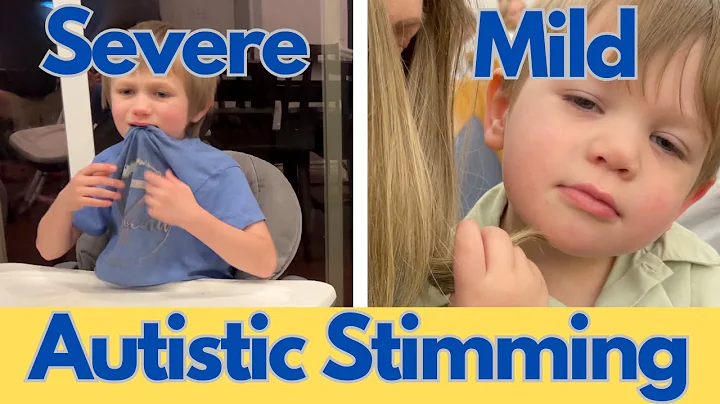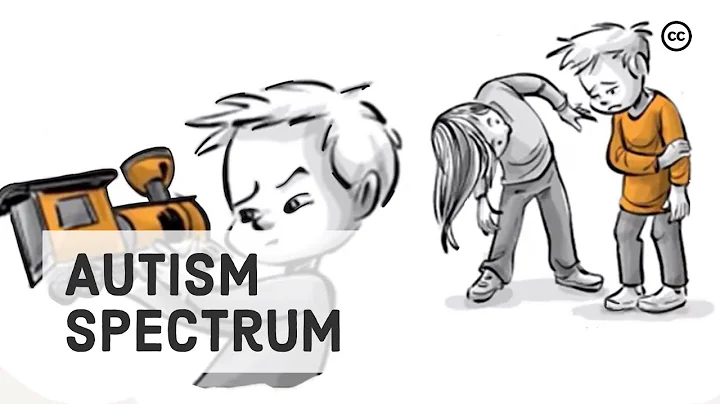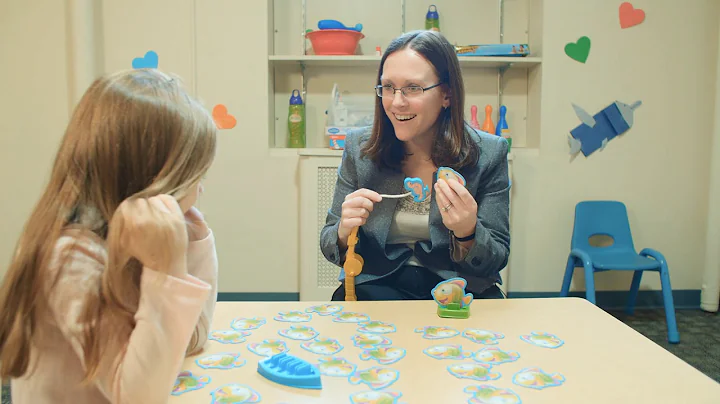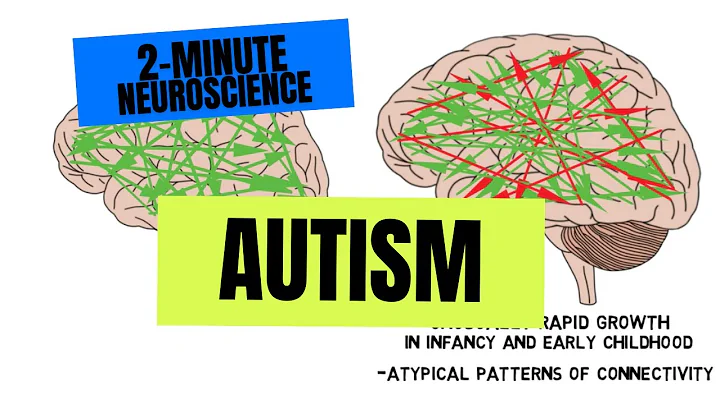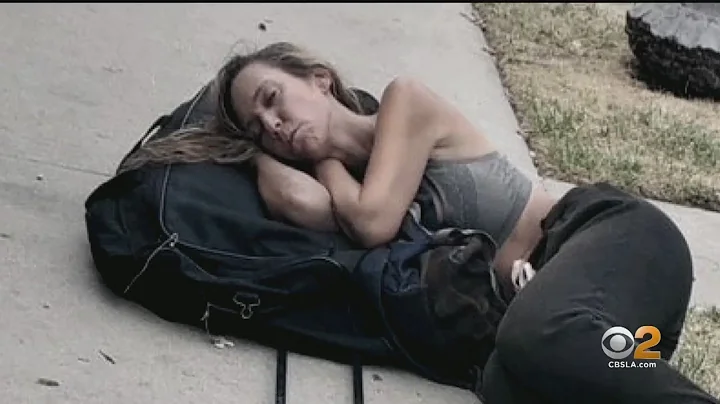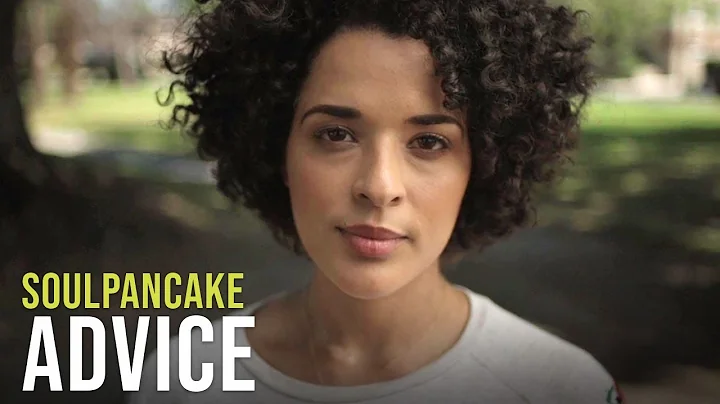Zou Xiaobing and Da Mi agreed that there are three areas for improvement in the currently most popular intervention model for young children with autism:
First, there should be more inclusive products;
Second, it should be closer to real life scenarios;
The third is to allow parents to get more involved, to truly and objectively understand the degree of their children’s social disorders, so that they can collaborate with professional rehabilitation teams to help their children.
Professor Zou Xiaobing is almost a household name in the Chinese autism circle. Since he founded the Child Development and Behavior Center of Sun Yat-sen Third Hospital in 1999, his team has treated about 50,000 autistic children so far.
html Over the past 123 years, he has come to realize more and more clearly that social impairment is the core defect of autism, and the closer the intervention is to the social scene, the more targeted it will be.
"Rice" Jiang Yingshuang entered the circle because her daughter Xiaomi was first diagnosed with autism by Zou Xiaobing. Although Xiaomi has "taken off its hat" due to high-intensity home intervention, Daimi has regarded this field as a lifelong career.
In 2014, she transformed from the chief reporter of Southern Metropolis Daily , and founded the self-media " rice and millet ". In 2016, the first offline rehabilitation center for autistic children was established. Six years later, it has expanded to 31 centers, providing direct rehabilitation services to about 10,000 children.
Like Zou Xiaobing, Da Mi has been thinking about how to break through the limitations of traditional institutional intervention.
In 2019, Daimi and Xiaomi opened a new center in a second-tier city. More than 1,000 parents signed up, but in the end less than 200 children attended. After a follow-up visit, we learned that the main reason for those families who did not come was because they were unable to support themselves financially.
"If less than 20% of households can consume our products, it would be a tragedy for me." Rice said. However, the overall cost of 's one-to-one personalized intervention for three hours a day is really high, and the price is really difficult to reduce. China's autism family intervention mainly relies on self-funding, which is completely different from major European and American countries, so the design of intervention products cannot copy Europe and the United States. In fact, she and her team have been improving the product to make intervention more affordable and more effective for more people.
Over the past few years, Daimi and Xiaomi have invested more than 100 R&D and other manpower and spent a total of more than 10 million yuan to explore a new model of social inclusive intervention in natural scenarios.
That is to build a RICE social town.

Reflection: We are not enough to fight against the rising incidence rate
One day in March 2020, Da Mi told Zou Xiaobing that the "RICE Social Town" was finally launched.
“Professor Zou has been popularizing science and promoting the concept of community intervention to me. The town was named after our collision,” said Da Mi.
Zou Xiaobing has promoted community intervention to many people. This is his reflection on the essential flaws of the current autism intervention model:
The world is not prepared for the significant increase in the incidence of autism. Due to space limitations, most institutional interventions are carried out in the form of indoor "classes", table games, cognitive games, exercise games, group activities, etc., which are essentially traditional intervention models for children with cerebral palsy, hearing impairment, movement disorders, and intellectual disabilities. Although the habitual use of it has achieved certain results, the social elements it embodies are completely insufficient, and the targeted intervention for autism is not strong.
When practicing social interaction, a core obstacle, it is inseparable from real life scenarios. For example, "greeting children on the road", "queuing up for shopping", "taking turns to talk", "cycling race", "playing poker", "playing chess", etc.Taking the ability of "obeying traffic rules" as an example, can children learn how to avoid traffic lights through desktop training while sitting indoors?
Family intervention is receiving more and more attention, especially when the concept of natural developmental behavioral intervention has been praised by the international mainstream. Various autism intervention models in natural family situations, including the early Denver model, World Health Organization " "Caregiver Skills Training, CST" has been valued and used in various countries due to the good evidence-based medical evidence. But families vary greatly. When their children run around outdoors or in shopping malls for training, many parents will feel there are safety issues. If their children engage in disruptive behavior, parents will feel embarrassed and spend less time with their children outside.
Generally speaking, parents feel that they are powerless and the results are not satisfactory.
What should I do?
Explore: I have a new idea
Can we imitate the environment of family and community and build a place for children as a transition before integrating into society? Children can grow up and parents don’t have to worry about safety issues and face issues?
This is the RICE social town, a place where socialization begins. Zou Xiaobing calls it a Garden of Eden, or a Peach Blossom Spring:
RICE town has all kinds of places and functions that a normal ordinary town should have, including streets and alleys. , traffic lights, "buses", schools (classrooms), basketball courts, libraries, cinemas, shops, grocery stores, candy stores, toilets, housing (student dormitories, beds)... of course there are also traditional classrooms.
There are all kinds of "people", the mayor (head of the institution), parents, classmates, teachers, drivers, firefighters, shop assistants, police officers, librarians, passerby A, passerby B...
Here is a can It is a place where autistic children can live, learn (to improve various knowledge and abilities), and play. Most importantly, it is a place where various social activities are organized and planned and "inevitably" happen. It is a place where children can A place where interaction is necessary (otherwise it may not be comfortable or fun);
This is a place where parents (parents serve as volunteers in the town and become staff members of the town to varying degrees) can really learn family intervention ; It is a place where a child may not want to leave after arriving; here there will be various "daily, real social events, as well as some ridiculous, funny, unexpected social events" (queuing, shopping, conversations, Taking turns going to the toilet, airplanes in the sky, neon paintings on the walls, bells ringing, police cars roaring, passers-by falling, "cars" being punished for running red lights, walking collisions, shopping conflicts, singing, children clashing, a group of people Crowded together, want to buy something but have no money, the toilet is full of people...).
Social ubiquity will be fully reflected here, and of course it must be a safe place.

Small town theater
Are natural scenes really useful?
The Garden of Eden is not imagined.
In 2015, a group of top international experts in the field of autism intervention proposed that the concept and model of Natural Developmental Behavior Intervention (NDBI) formed by combining the development model of autism intervention and the behavior analysis model should become the future of autism intervention. Main method.
To put it simply: in natural settings (such as family, community, kindergarten, school, etc.), fully consider the development level of children and fully consider the specific defects of each child with special needs (such as social communication barriers, social motivation and lack of interest) or less intense, etc.), using behavioral therapy as a basic means to intervene.How to do
specifically?
Zou Xiaobing gave an example, "The door handle of the Child Development and Behavior Center of our hospital is deliberately set very high, about 1.7 meters. When a child wants to go out, parents should not be overly proactive and open the door for him in advance, but should Train him to perform social behaviors , or make the sound of opening the door , or point his finger at the door, or look at the person he is asking for help, or combine these actions. Asking his parents to open the door for him is a typical natural situation intervention.”
Fan Qingwei, who has the same dream as Zou Xiaobing, is one of the senior supervisors responsible for small town product development at Daimi and Xiaomi. In the past 20 years of rehabilitation experience, he found that Children with autism often have a problem: the skills learned in institutions cannot be used in daily life at home. In natural scene teaching, this problem rarely occurs, because reality is easy to generalize and return to life.
Moreover, some children cannot learn in desktop teaching, but they learn very quickly in real situations.
For example, there is a boy with weak understanding ability. He is over 6 years old and has not learned to distinguish between a cup and a mobile phone. Fan Qingwei thought of a way, suspended the desktop teaching, and turned to teaching his mother, "Ask her to create various opportunities to use the cup at home, let him take it, let him drink water, let him give it to others." After about 2 months, , the child understood what the cup is, and "the cognitive understanding ability and the awareness of following instructions have been improved. He learned to receive water by himself, learned to hold the cup to deliver water to his father, and maintained the balance of the water in the process. This is Advantages of situational teaching ".
Everything happens naturally, but in fact it is organized and planned.
In a small town, "drinking and carrying water" is just one of the many natural scenes. In Zou Xiaobing's imagination, there are also buying tickets and taking the bus, meeting classmates and teachers, and talking to classmates. Take turns shooting, queuing up to buy candy, running competitions, knocking on doors to enter the toilet, playing chess, poker, rock-paper-scissors, tug-of-war, riding tandem bicycles ... Here, good behavior will win "town residents" (teachers, Parents, volunteers) will be rewarded with natural and logical results (including direct rewards and indirect token rewards), and inadequate behavior will be prompted and assisted by "town residents". serious bad behavior will not be beaten or scolded, but You will get mild natural and logical punishment results. The applied behavior analysis (ABA) technology is fully and naturally reflected here.
These scenarios are specially designed and arranged to allow children with autism to develop social interests and motivations, trigger social behaviors, gain happiness from them, and slowly fall in love with social interactions.
Zou Xiaobing particularly emphasized : everything seems to happen naturally, but in fact it is organized and planned by the "town residents", and the organizational plan is personalized based on the children's assessment results, reflecting the " "Small town residents" "one minute on stage, ten years of hard work off stage".
If the "small town" in RICE social town solves the natural situation, then "organized and natural occurrence" is left to RICE.
Based on the experience of serving 10,000 autistic children, Daimi and Xiaomi have developed a step-by-step formula suitable for Chinese autistic children and families based on ABA, PRT, and ESDM, combined with ST speech and language therapy and OT occupational therapy. Assessment and curriculum system, this is RICE.
Starting in March 2020, RICE social towns have been piloted in Zhengzhou and Dongguan. The focus of exploration is how to apply the experience and research and development results of 10,000 cases to small towns, and how to use them in real and common life In the scenes, different teaching objectives and fact-based scene changes are added to give children an immersive social experience.
Zeng Songtian, director of the DaMi and Xiaomi Child Development Research Institute, gave an example, “The children have snack time, and we did a deconstruction to see which links can embed opportunities for socialization and communication.For example, let children share food and introduce food; specially design some foods that are not easy to open, and guide children to learn to ask for help and make requests; guide children to ask peers for food and learn to deal with rejection; or make snacks together and learn division of labor."

Restaurants in small towns
Parental participation can reduce costs
Swipe up and go to the small town supermarket with Xiao Ou
5-year-old Xiao Ou walked into the supermarket with money given by his mother in his pocket to buy toys
But when I arrived at the supermarket, I found that there were too many people - there were three children who were also shopping.
Xiao Ou hated queuing, "I don't want to play anymore." "He turned around and was about to leave.
At this moment, a hand suddenly grabbed him. "Wait a minute. "
's hand led him to the back of the queue. "There are two more children and we will go to Xiaoou. "
While waiting, Xiao Ou was a little impatient and tried to jump in line, but was pulled back by that hand.
Finally it was Xiao Ou's turn.
"Auntie, I want to buy a car. "
" Okay. "The salesperson handed over a red car.
"How much? ".
"10 yuan. "
Xiao Ou took out the money from his pocket and handed it to the salesperson, and successfully bought the car.
Turning around, the hand that had been secretly pulling Xiao Ou made a big sign to him.
It turned out that it was mother.
And the hand in the supermarket The salesperson is rehabilitation teacher .
The children in the queue are Xiaoou’s "classmates".
Going to the supermarket to shop is a goal that Xiaoou and the other three children have practiced many times - but in 4 In the eyes of children, this is a game they enjoy playing endlessly.
Xiao Ou went from resisting, crying, not knowing how to line up, not knowing how to ask questions, not knowing how to answer, and not knowing how to "give money" to successfully buying a car. The rehabilitation therapist provided guidance dozens of times.
And the mother was a little confused at first. She didn’t know how to deal with Xiao Ou’s crying, when to provide assistance to Xiao Ou, and sometimes over-assistance occurred. These problems were all solved. The rehabilitation therapist pointed them out one by one and made adjustments immediately.
This is a common scene in small towns. Parents accompany their children 75% of the time. Parents are participants, learners, and assistants of the rehabilitation therapist.
One kill achieves multiple goals. Gradually, the parent becomes a high-level rehabilitation practitioner, and she can take the child back to the real family and social environment to continue intervention. The small town mainly focuses on 1-to-6 group intervention. , parents’ participation and assistance can reduce the burden of rehabilitation practitioners.
At the same time, since the proportion of one-to-one individualized intervention has been reduced to 25%, it has also solved Dami’s long-standing hope: to reduce costs and provide services at a relatively low price. More autistic families.
"For parents who are working and want to have more independent time, the original institutional intervention is an option. For parents who have plenty of time and want a more favorable price, they can choose RICE Social Town. "Dami hopes to use this method to solve the contradiction between product sophistication and cost.
Zou Xiaobing pointed out that even if a certain period of institutional intervention is chosen, children will eventually have to return to family and natural environment for intervention. Therefore, an agency must also teach parents to conduct family intervention.

The town’s hospital
 30 more autistic families participated in the early stage of the town’s R&D and pilot
30 more autistic families participated in the early stage of the town’s R&D and pilot
In the past two years or so, the R&D team has communicated with Zou Xiaobing many times about the town’s progress. “Professor Zou has always been very anxious. Why do you think you can’t do it? I didn’t tell him the pain, trouble, and cost of time, manpower, and financial resources during the trial.”
Da Mi believes that there are three key points to evaluate whether an institution or a rehabilitation practitioner is good or bad. :
 . Is the setting of each training goal correct?;
. Is the setting of each training goal correct?;
2. Is the effective frequency of training per unit time sufficient?;
3. How to keep the child in a relatively relaxed, happy, or at least a calm mood during the intervention?. On the one hand, we hope that the intervention the child receives will be effective and that the child can learn skills quickly. On the other hand, the child's emotions should not be overly stressful. A balance must be struck between the child's ability improvement and emotional stability.
also has the same evaluation of the rehabilitation quality of RICE Social Town. Compared with 1-to-1 structured teaching, parent-child intervention and natural situation training must be relatively loose. This may be disadvantageous when it comes to correcting a child's behavior or acquiring specific knowledge, as it is not as effective as the turn-based intervention method (DTT). Therefore, when Yuan Qiaoling, Chief Technology Officer of DaMi and Xiaomi, and DaMi once discussed this issue, they unanimously proposed to add DTT content to the town. Then, how to achieve a balance between one-to-one and parent-child intervention in limited time and space is the first difficulty that needs to be solved in the pilot process.
The second difficulty lies in the varying levels of parents. What should they do in the process of parent-child training? How to participate effectively?
There is also the contradiction between the ultimate product and cost. If we want to fully realize the school (classroom), basketball court, library, cinema, shop, grocery store, candy store, toilet, housing... then Zou Xiaobing envisioned. In multiple scenarios, "Such a cost is beyond the reach of our institution and most families." How to find a balance among the contradictions?
After more than 800 days and nights of polishing from March 2020 to now, these above difficulties have been explored. "What we have paid is unparalleled. I just spent thousands of hours in R&D meetings." Da Mi said that in addition to Professor Zou Xiaobing, Professor Hua Youjia (tenured professor, BCBA-D, University of Virginia, USA), Dr. Yuan Qiaoling (Ph.D., BCBA-D, Applied Behavior Analysis, Columbia University, USA), and Dr. Zeng Songtian (Ph.D., Early Intervention in Special Education, University of Washington) In addition to these experts, there were almost 100 staff members from Daomi and Xiaomi, and the investment cost exceeded 10 million.
More than 130 autistic children have participated in the pilot program, and 24 are still reading. "Seeing them grow is the happiest thing for us," said Cui Yaliang, product architect of RICE Town and senior supervisor of rice and Xiaomi. He is one of the employees who has participated in the town pilot from beginning to end. He has received a lot of feedback from parents. .
A parent said: "What children learn in small town classes is easier to show when they return home. If one-on-one is high-intensity input, then small town classes are input and output at the same time. The children have just learned The way of expression may be expressed at the same time, so it can be quickly reflected in life.”
Another parent gave an example: “After taking safety courses in a small town (including not opening the door to strangers and holding parents’ hands when going out), he no longer runs around when we go out. He used to see Things of interest will leave on their own without being called back, but now they will come back as soon as they see that we are not following them.”
In addition to the parents’ intuitive feelings, Cui Yaliang and his colleagues will also analyze the children’s emotions very carefully. Variety.
For example, the child below, after one and a half years of intervention, learned to wait, learn to share toys, be able to handle some emotions on his own, and be able to accept rejection.

Another senior supervisor, Li Peng, said, "There should be 10 out of 24 children in the kindergarten. It is difficult to tell (suffering from autism) if teachers and other parents are not told."
is finally coming to reality
In previous pilots, various social scenes were still relatively crude.
But now, RICE Town, which is about to be officially opened, is finally coming to fruition.
The first batch of five scenes were set up: supermarket, hospital, restaurant, small theater, and amusement park.
When colleagues from DaMi and Xiaomi sent photos from the supermarket to Zou Xiaobing, the first question he asked was: "Will these be real or fake in the future? It's better to be real."

Supermarket in a small town
True or false is just the first problem that RICE town has to solve.
"Autism rehabilitation intervention has never been an easy task," Zou Xiaobing said, "We still don't know whether such practice can be successful. I have been to many autism training institutions abroad and have never seen anything like this. "This is a pioneering work. If it is done, it will really become a development trend."
Zou Xiaobing imagines that one day, parents can even live in small towns with their children, and treat life as an intervention every day. , one period is three months or more. "When the children can graduate, the parents have also graduated."
This is also Da Mi's dream. Rice and Xiaomi started from a self-media and have been doing institutional intervention for 6 years. "It needs a cleanup and a fresh start." Rice said that RICE Town is different from all previous products. "It has placed a lot of our emotions and I hope. "
" The town is still developing. I hope that the first batch of citizens who settled in the town will not think it is shabby or imperfect. It can be said that the life of each of our children is an experiment and cannot be repeated. , but what I can be sure of is that we will work together with heart, love, and more importantly, a scientific attitude to make it more perfect. "
The town has just started.
text | Wang Jilu


